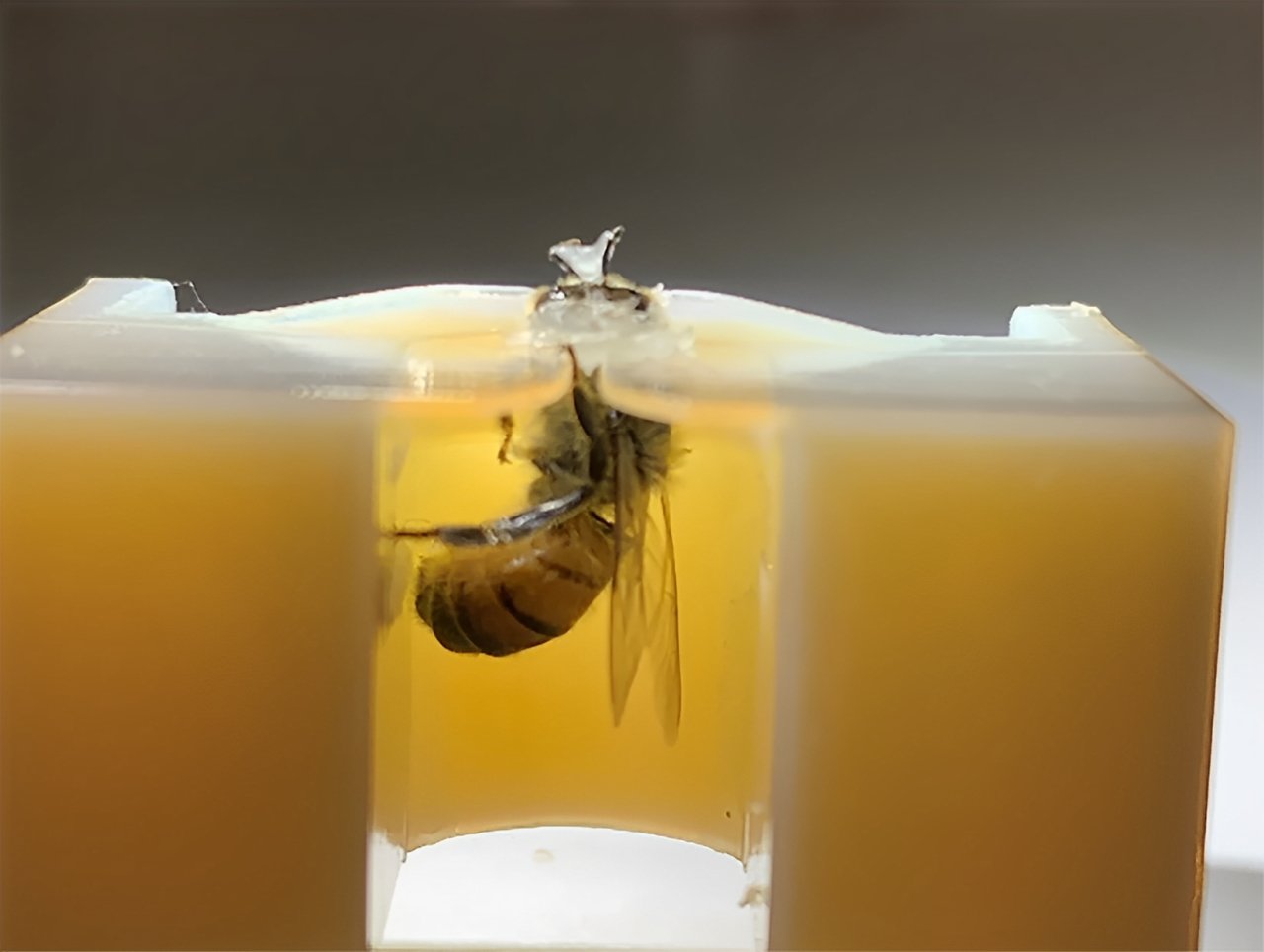The buzz around Michigan State University is more than just a metaphor. Researchers at MSU have discovered a groundbreaking method to detect lung cancer using honeybees.
Honeybees, known for their incredible olfactory abilities, can now detect lung cancer in human breath. This innovative project, led by Professor Debajit Saha of MSU’s Institute for Quantitative Health Science and Engineering (IQ), aims to revolutionize early cancer diagnosis through smell-based detection techniques.
“Bees have an amazing sense of smell, just like dogs,” explained Professor Saha. Over three years, a team of five student researchers and their lab manager conducted small brain surgeries on the honeybees using specially designed harnesses. By exposing the bees’ antennae to cancer-causing chemicals and cancer cell culture volatiles, the team could observe the bees’ reactions.
Summer McLane-Svoboda, a graduate student involved in the project, described the precision required for the surgeries. “It’s not insanely difficult, but it did require a steady hand to cut into them.”
The bees’ heightened sense of smell allows them to differentiate not only between cancerous and healthy cells but also between different subtypes of lung cancer, such as non-small cell and small cell lung cancer. The next phase involves human testing and developing a device that can provide a cancer diagnosis from a breath sample.
“Early detection can completely change the treatment regime that a patient is exposed to,” said Saha, emphasizing the potential for less aggressive treatments and better survival rates if cancer is detected early.
Read More: Restaurant Closes After 25 Years Due to Violence and Unsafe Conditions!
Staying Healthy: Why Monitoring Fluid Levels Matters for Cars and People?
Passenger Barred from Flight for Using Popular Packing Technique!
Svoboda added, “This could give more people a chance at beating cancer.” According to the American Cancer Society, lung cancer is the second most common cancer in both men and women in the United States, with most diagnoses occurring in people aged 65 and older.







+ There are no comments
Add yours